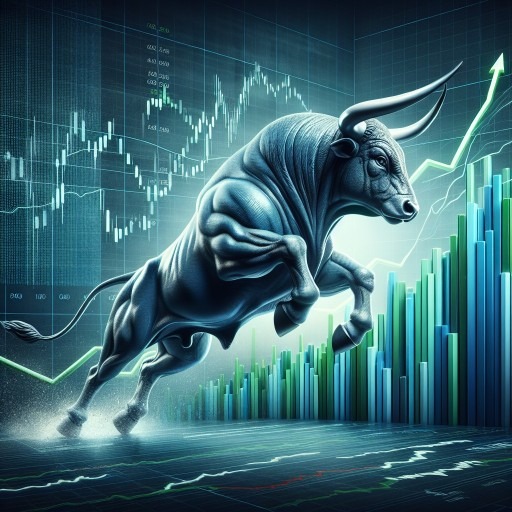Which economic indicators are used to measure the global economy? Let’s find out.
Feb 25, 2024
Introduction: The Pulse of the Global Economy
Economic indicators are akin to the vital signs of the global economy, offering a snapshot of its overall health and direction. Just as a physician would measure a patient’s blood pressure or heart rate, economists and investors monitor these quantitative measures to assess the performance and predict future activity in the global marketplace. Key indicators such as GDP growth rates, inflation, employment figures, and trade balances provide insight into the vigour or fragility of economies.
The interconnectedness of economies means that a fluctuation in one region can send global shockwaves, akin to the butterfly effect in chaos theory. For instance, a downturn in the Chinese manufacturing sector can have far-reaching implications, affecting everything from the Australian resource market to European luxury goods sales. This ripple effect underscores the importance of understanding not just domestic, but international economic indicators to grasp the global economic climate fully.
Economic indicators also have a profound psychological impact on investors, swaying market sentiment and influencing financial decisions. The release of vital employment data in the United States can fuel optimism, driving up stock prices and reducing the perceived risk of investment in emerging markets. Conversely, rising inflation rates might trigger a sell-off in bond markets due to the fear of potential interest rate hikes by central banks. These psychological reactions to economic data underscore the role of indicators in reflecting the economy’s current state and in shaping market participants’ expectations and behaviour.
Gross Domestic Product (GDP): The Economic Cornerstone
Gross Domestic Product (GDP) is the most encompassing indicator of a nation’s economic activity and health. It represents the total dollar value of all goods and services produced over a specific period and is often used to compare the financial performance of different countries. A rising GDP indicates economic growth, typically leading to increased corporate profits and stock market gains. At the same time, a contracting GDP can signal recessionary pressures and potential declines in asset values.
Analyzing global GDP trends is essential for understanding the broader narrative of economic expansion or contraction. For example, sustained GDP growth in emerging markets may signal a shift in the balance of economic power on the global stage, potentially leading to a reallocation of investment capital. On the other hand, a slowdown in the GDP growth of developed nations might prompt central banks to implement stimulative monetary policies, which can have various implications for global financial markets.
From a Machiavellian perspective, astute investors can leverage GDP forecasts and revisions to position their portfolios advantageously. By anticipating how GDP data will influence market sentiment and policy decisions, investors can make preemptive moves to capitalize on these shifts. For instance, if investors expect a country’s GDP to outperform expectations, they might increase their exposure to that country’s equity markets before the data release, positioning themselves to benefit from the positive reaction to the news. This strategic use of economic foresight, reminiscent of Machiavelli’s counsel to be anticipatory and cunning, can be a powerful tool in an investor’s arsenal.
International Trade and Balance of Payments
International trade and balance of payments are critical indicators of a country’s economic standing and its competitiveness on the global stage. Trade balances, which measure the difference between a nation’s exports and imports, can reveal much about the demand for a country’s goods and services. A consistent trade surplus might indicate a competitive advantage in specific sectors or a robust international demand for the country’s products. Conversely, a trade deficit could suggest an economy’s increasing reliance on foreign goods and potential vulnerabilities in domestic industries.
The current account, a component of the balance of payments, offers a broader view of a nation’s economic transactions with the rest of the world, including trade in goods and services, cross-border investment income, and transfer payments. A surplus in the current account means that a nation is a net lender to the rest of the world, while a deficit indicates a net borrower. This balance reflects a country’s economic health and position in the global financial system.
In a Machiavellian context, shrewd investors might exploit trade and current account imbalances to predict currency strength or weakness. For instance, a country with a significant current account surplus may see its currency appreciate due to the inflow of foreign capital. On the other hand, persistent current account deficits may lead to the depreciation of a nation’s currency. Investors who foresee these movements may position their currency trades or international investments to benefit from these shifts, embodying the Machiavellian principle of using strategic foresight to gain an advantage.
Inflation Rates and Purchasing Power
Inflation rates serve as a thermometer for the economy, indicating how hot or cold the market is running. As prices for goods and services rise, inflation erodes the purchasing power of money, meaning consumers can buy less with the same amount of currency. This can profoundly impact consumer behaviour, savings rates, and investment strategies. For example, during periods of high inflation, individuals may be more inclined to spend or invest their money rather than watch it lose value over time, which can further fuel economic activity.
Investors closely monitor global inflation trends, significantly affecting interest rates and investment returns. Central banks often respond to rising inflation by increasing interest rates to cool off an overheating economy. Higher interest rates can lead to higher borrowing costs and may dampen economic growth, but they can also attract foreign investment into a country’s bonds, seeking higher yields. Conversely, low inflation rates may prompt central banks to lower interest rates to stimulate spending and investment, which can boost stock markets and lead to currency depreciation.
Mass psychology plays a crucial role in how investors react to inflation data. If inflation is perceived to spiral out of control, it can lead to panic selling in the markets, as investors fear the erosion of their capital. Alternatively, market sentiment can be buoyed if inflation is controlled or conducive to economic growth, leading to increased investment and risk-taking. The anticipation of inflation reports can lead to market volatility as investors adjust their portfolios to mitigate the impact of potential changes in purchasing power and monetary policy. Understanding these psychological undercurrents can give investors insights into market movements and help them make more informed decisions.
Employment Data: The Workforce as an Economic Engine
Employment data, particularly unemployment and job growth figures, are critical economic vitality and consumer confidence indicators. Low unemployment rates often signal a robust economy, as more individuals are gainfully employed, leading to higher disposable income and increased consumer spending. Job growth reflects the health of individual sectors and the overall economic momentum. When businesses are hiring, it suggests they are anticipating higher demand for their products or services, which can be a precursor to economic expansion.
Analyzing global employment trends is crucial for gauging the strength or weakness of the economy. For instance, consistent job creation in diverse sectors can indicate broad-based economic health, while rising unemployment may point to structural issues or cyclical downturns. Employment trends can also vary significantly between regions and industries, providing a more nuanced picture of the global economy. For example, technological advancements may lead to job growth in the tech sector while displacing workers in more traditional industries.
Adopting a contrarian strategy, savvy investors and policymakers can use employment data to anticipate and respond to central bank policies and market shifts. If employment figures are more potent than expected, central banks may consider tightening monetary policy to prevent the economy from overheating, which could lead to higher interest rates. On the other hand, if job numbers are weak, central banks might lower interest rates or implement other stimulative measures to encourage economic growth. Investors who can read between the lines of employment reports may find opportunities to adjust their portfolios ahead of these policy shifts, potentially gaining an edge over less discerning market participants. This contrarian approach, which often involves going against the prevailing market sentiment based on deep analysis, can be efficient during economic uncertainty or transition.
Conclusion on Which economic indicators are used to measure the global economy?
A holistic view is paramount when interpreting economic data in the complex world of global economics. Just as a physician would not diagnose a patient based on a single symptom, investors and policymakers must consider a range of economic indicators to gain a comprehensive understanding of the economic landscape. This involves looking beyond the headline numbers of GDP, inflation, trade balances, and employment data to understand the underlying trends and what they signify about the health and direction of the economy.
Combining these economic indicators with an understanding of mass psychology and technical analysis can lead to a more nuanced market approach. Mass psychology can help gauge market sentiment and potential reactions to economic news, while technical analysis can provide insights into market trends and momentum. By integrating these disciplines, one can better anticipate market movements and identify potential risks and opportunities.
Adopting a Grandmaster chess mindset is crucial when navigating global economic indicators. This involves strategic thinking, foresight, and the ability to anticipate the moves of other market participants. Like a chess player who plans several moves, a wise investor or policymaker must consider the immediate implications of economic data and the second and third-order effects that may unfold. This strategic understanding allows for identifying patterns, predicting policy shifts, and crafting a well-informed game plan to navigate the ever-changing economic landscape confidently and precisely.
FAQ on Which economic indicators are used to measure the global economy?
Q: Which economic indicators are used to measure the global economy?
A: Key indicators include unemployment rates, job growth, GDP, inflation rates, and trade balances to assess economic health.
Q: How do unemployment rates reflect economic vitality?
A: Low unemployment typically indicates a strong economy with high consumer confidence and spending, driving further economic growth.
Q: Why is job growth significant?
A: Job growth signals sector health and economic momentum, suggesting business anticipation of increased demand for products and services.
Q: Can employment data predict central bank policies?
A: Strong employment data can lead to tightened monetary policy, whereas weak job numbers might prompt stimulative measures by central banks.
Q: How should investors use economic indicators?
A: Investors should adopt a holistic approach, combining economic indicators with market sentiment and technical analysis for strategic decision-making.
Stimulating Treats for the Mind

Gold Spot Price History: Will Gold Continue Trending Upwards

Mastering the MACD Strategy: A Powerful Tool for Investors

Surviving the Death of Education: Navigating the New Age of Learning

AI wars: The battle for Supremacy

Why Is Inflation Bad for the Economy? Demystifying the Menace

Chinese ChatGPT Rivals: Threat to Industry Dominance?

Rethinking Education: Embracing AI and its Implications

Yen Crash: Approaching the Bottom or Further Decline Ahead?
Puppet Master: China Vs USA: Who Is The Spider

Decoding the Enigma: What Are Gold Bugs

Long-Term Gold Targets: Exploring the Path to the Moon
Capitalizing on the Oil to Gold Ratio: An Ideal Time to Invest in Oil

Trading Chart Patterns Cheat Sheet: Mastering the Key to Success

Abu Bakr al-Baghdadi: The Rise and Fall of the ISIS Leader
Gold bullion bars prices: Trend Projections
When is the Next Bull Market: Unveiling Post-Crash Opportunities



